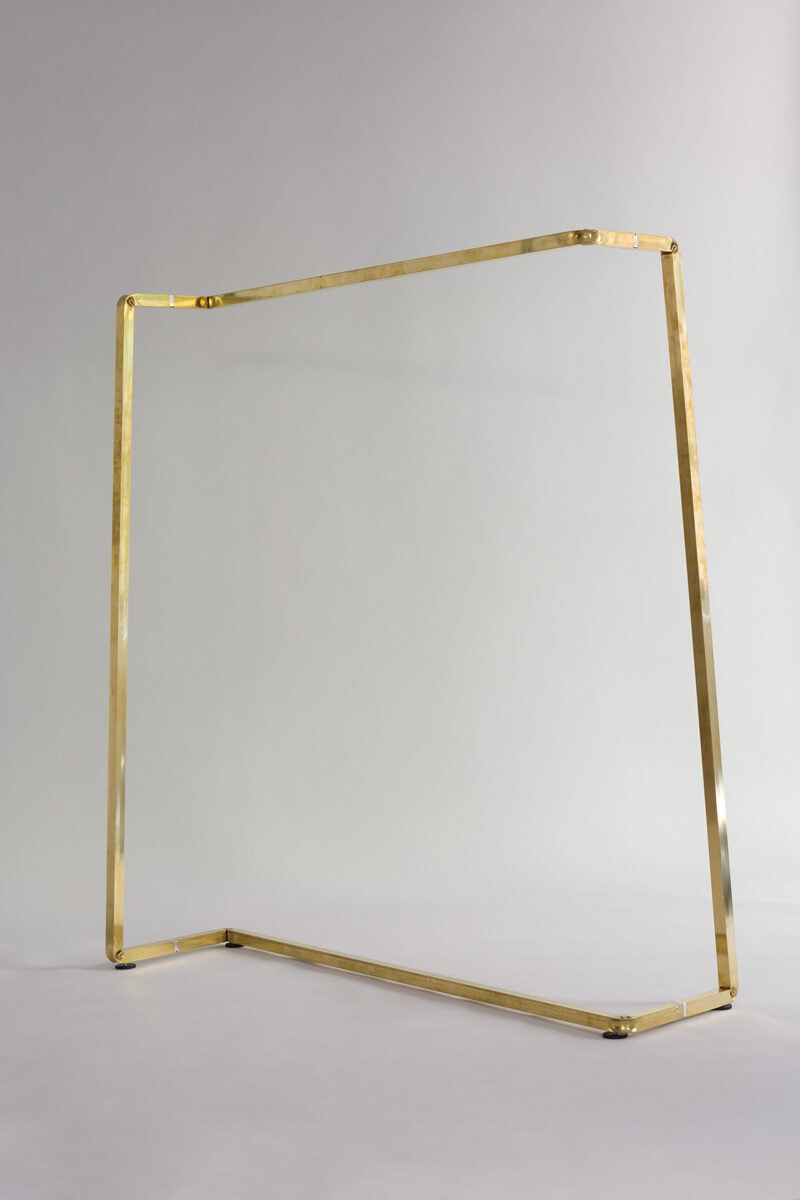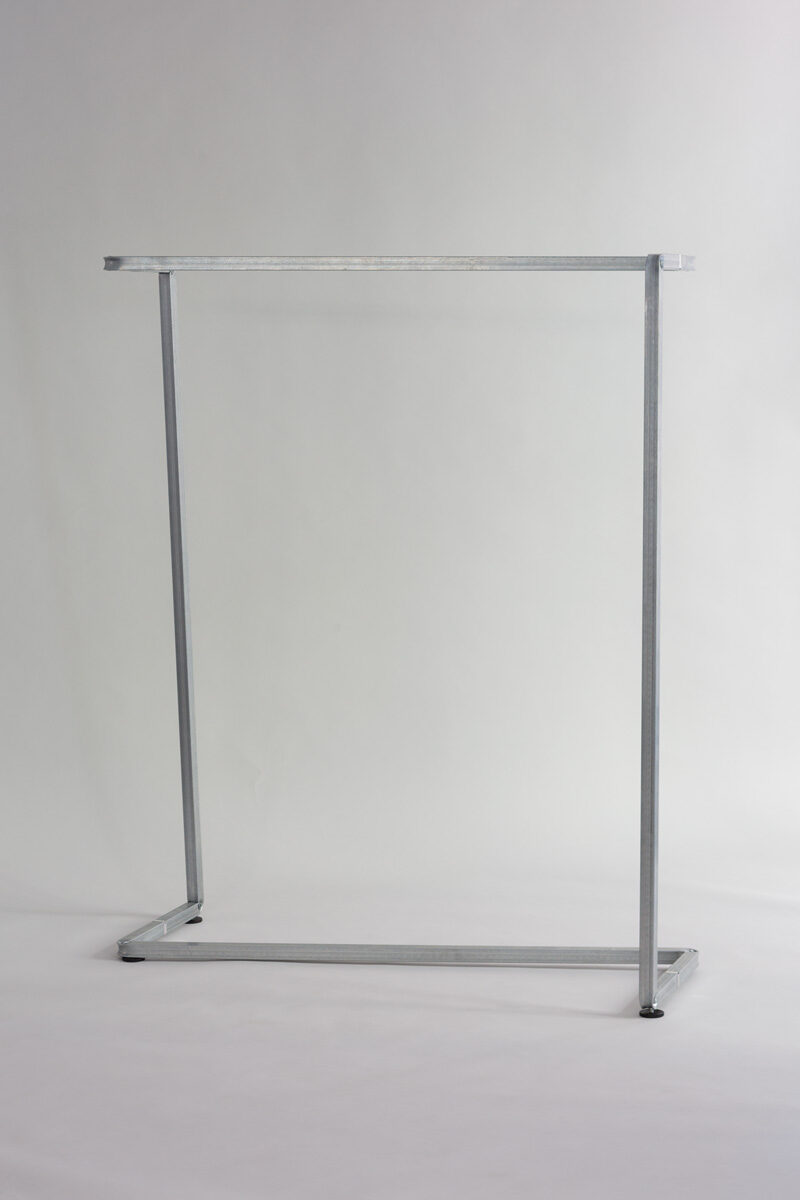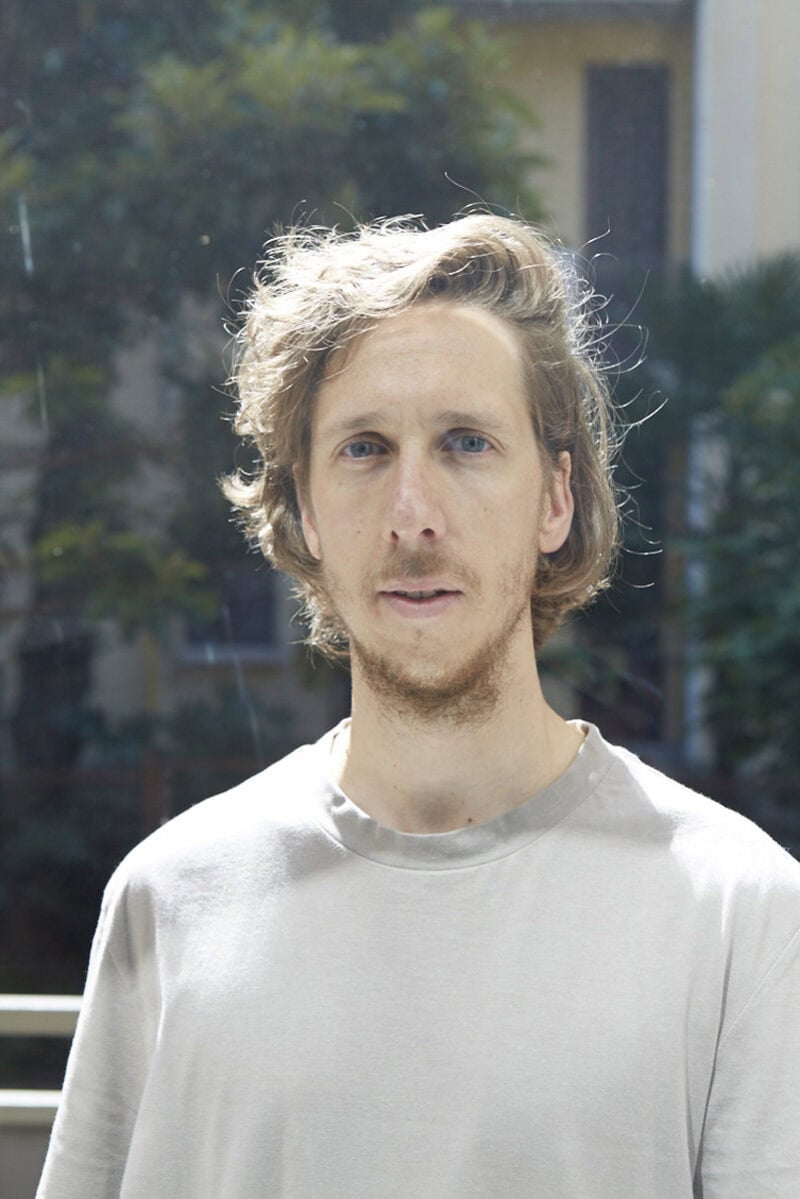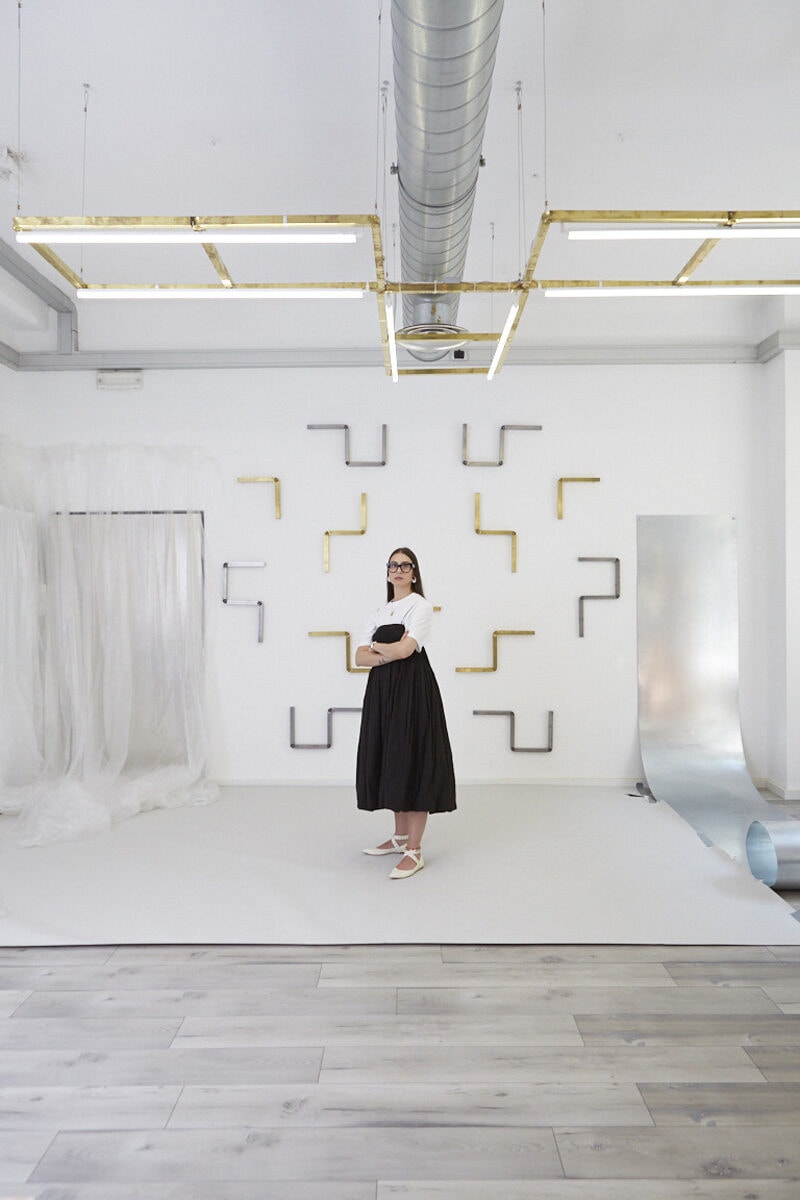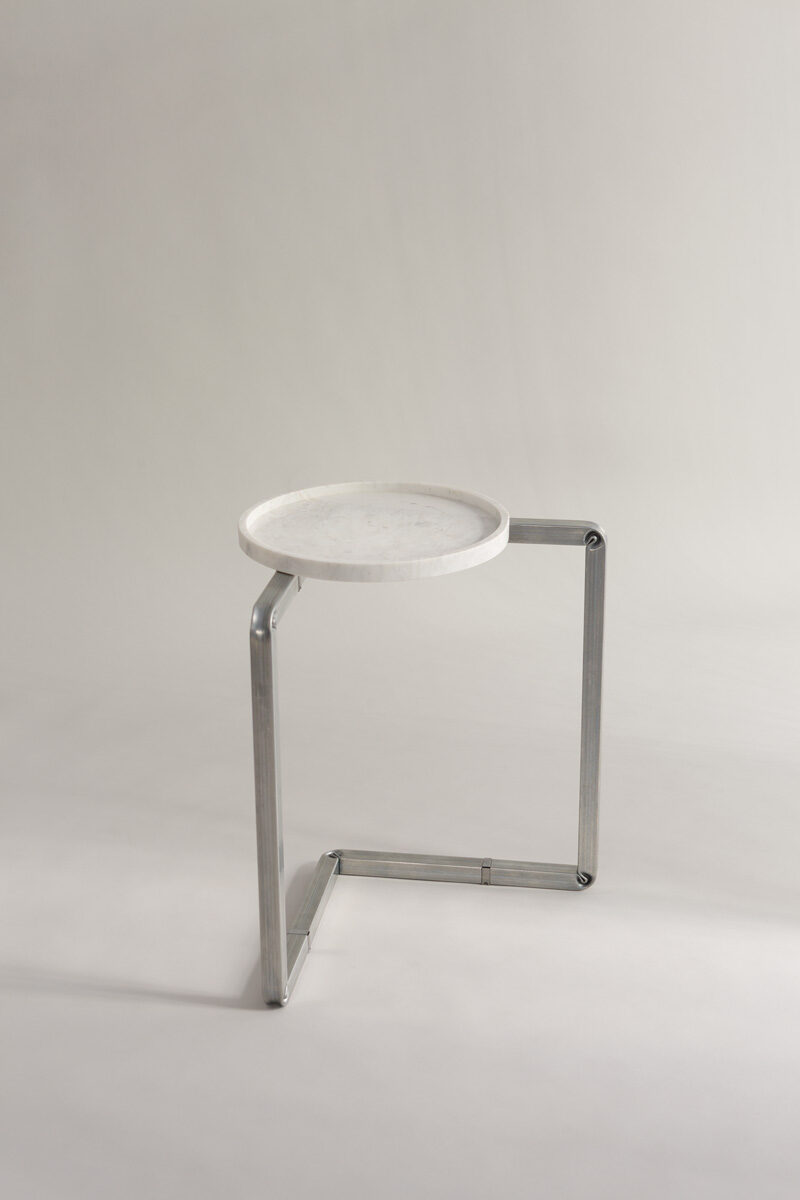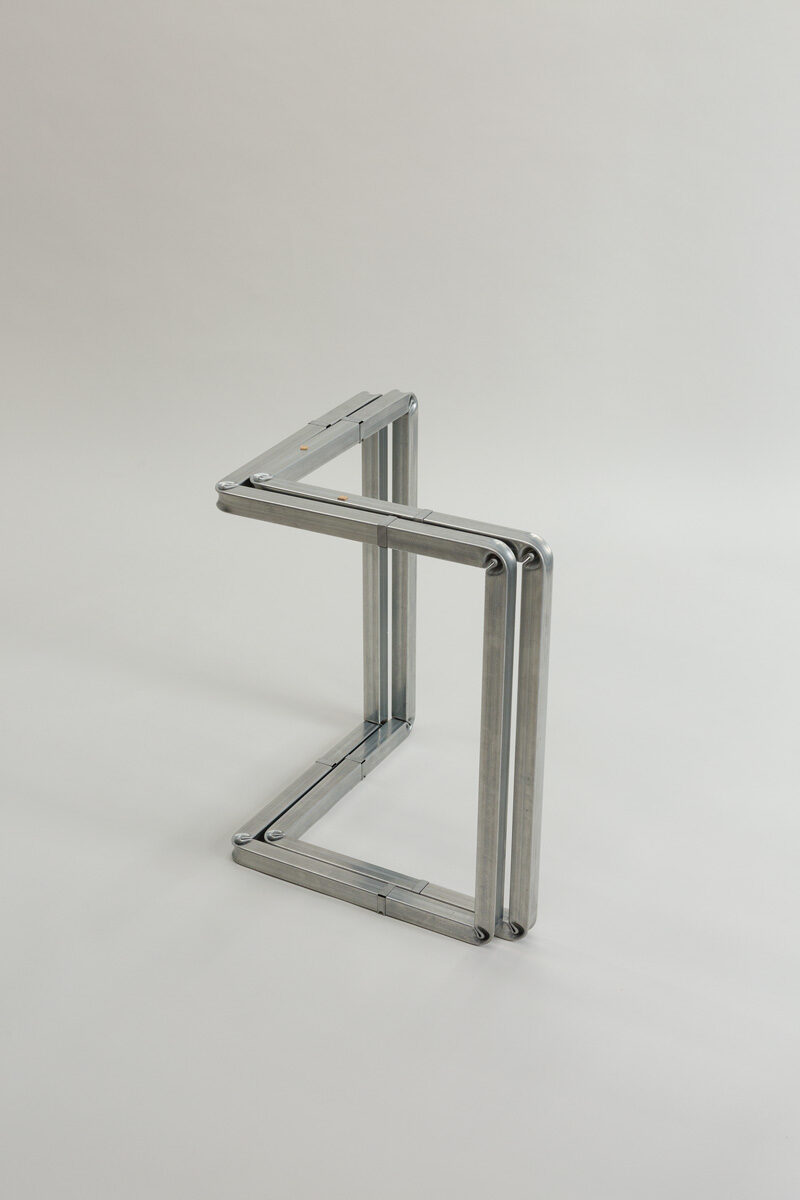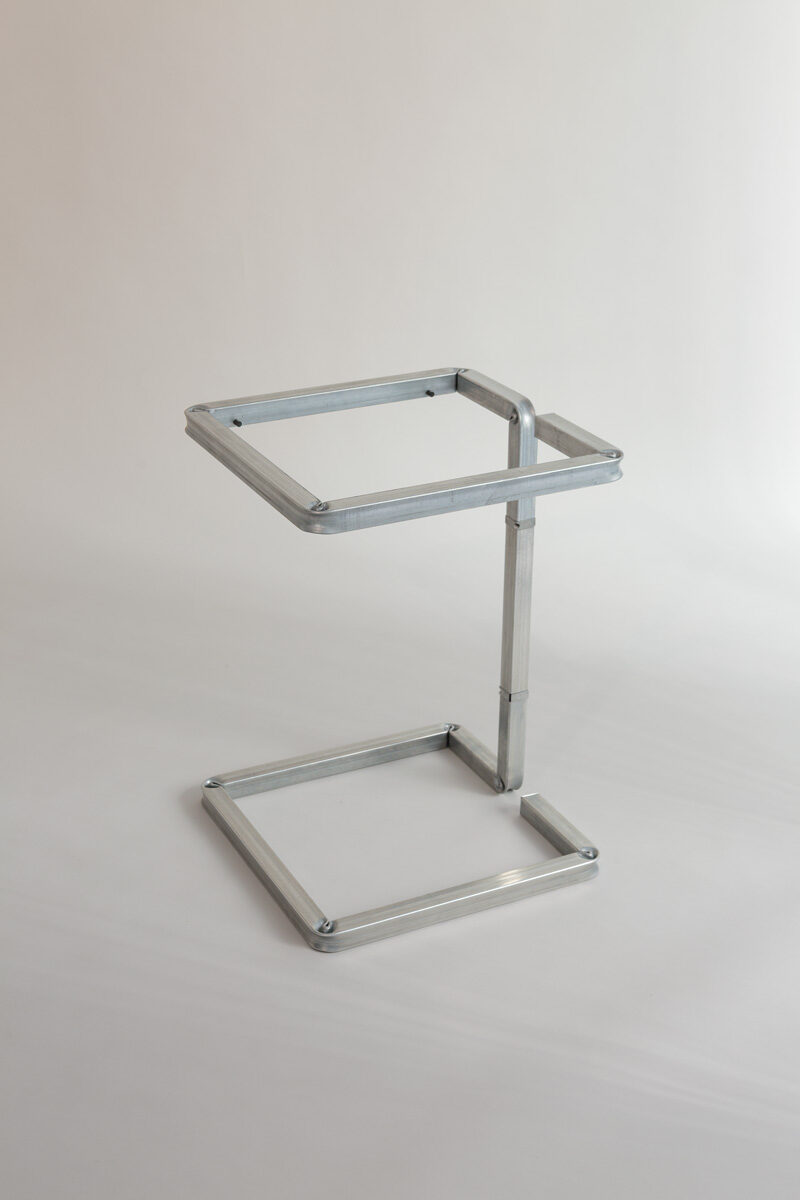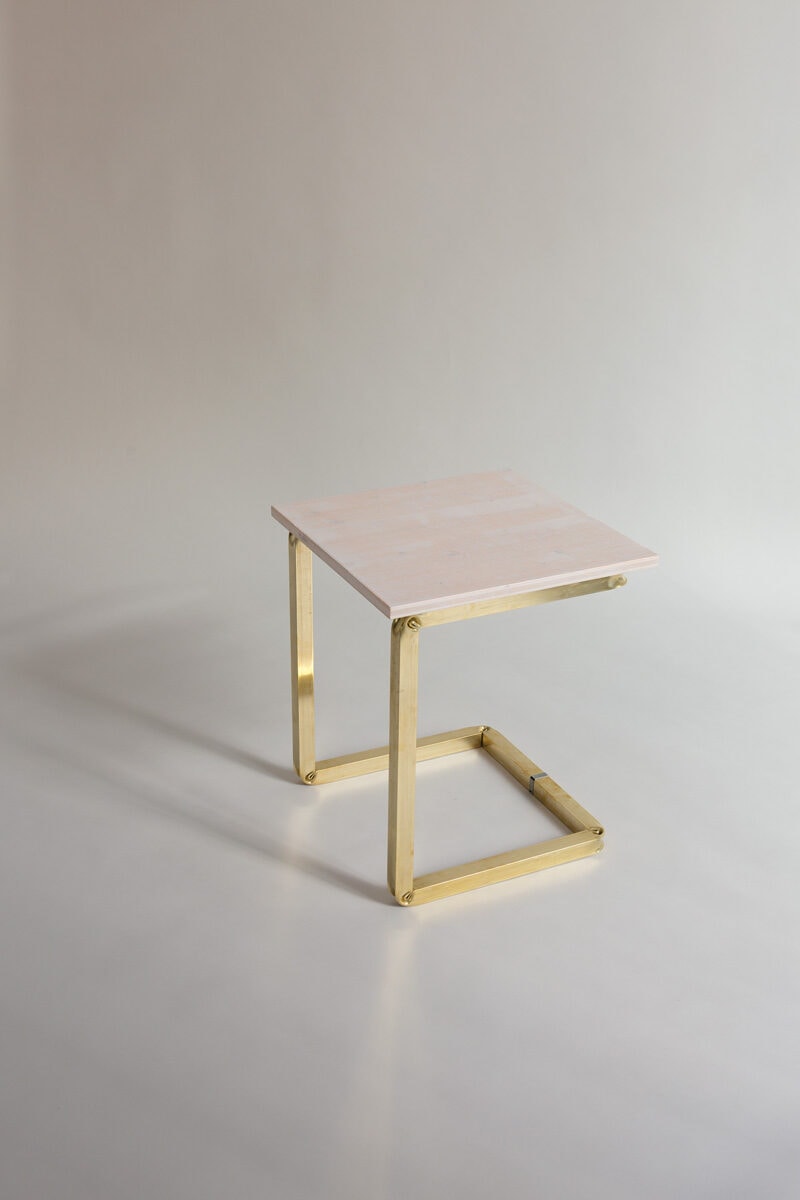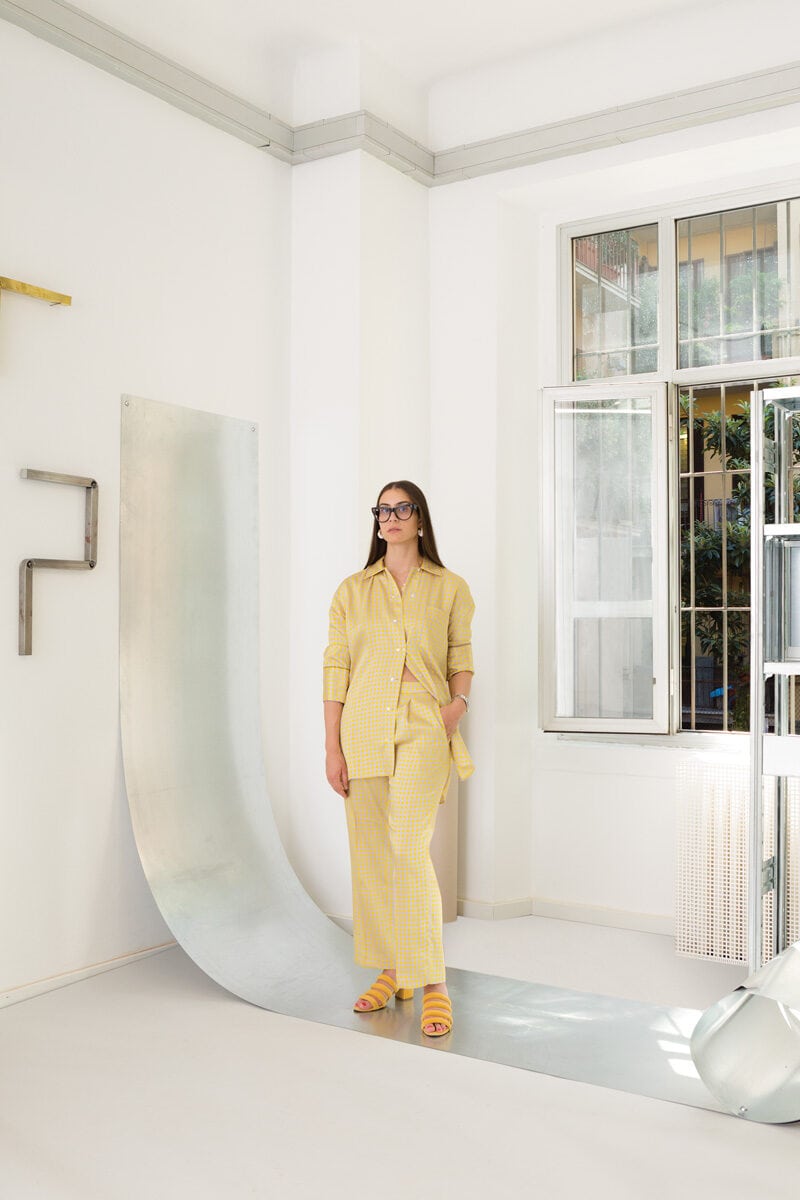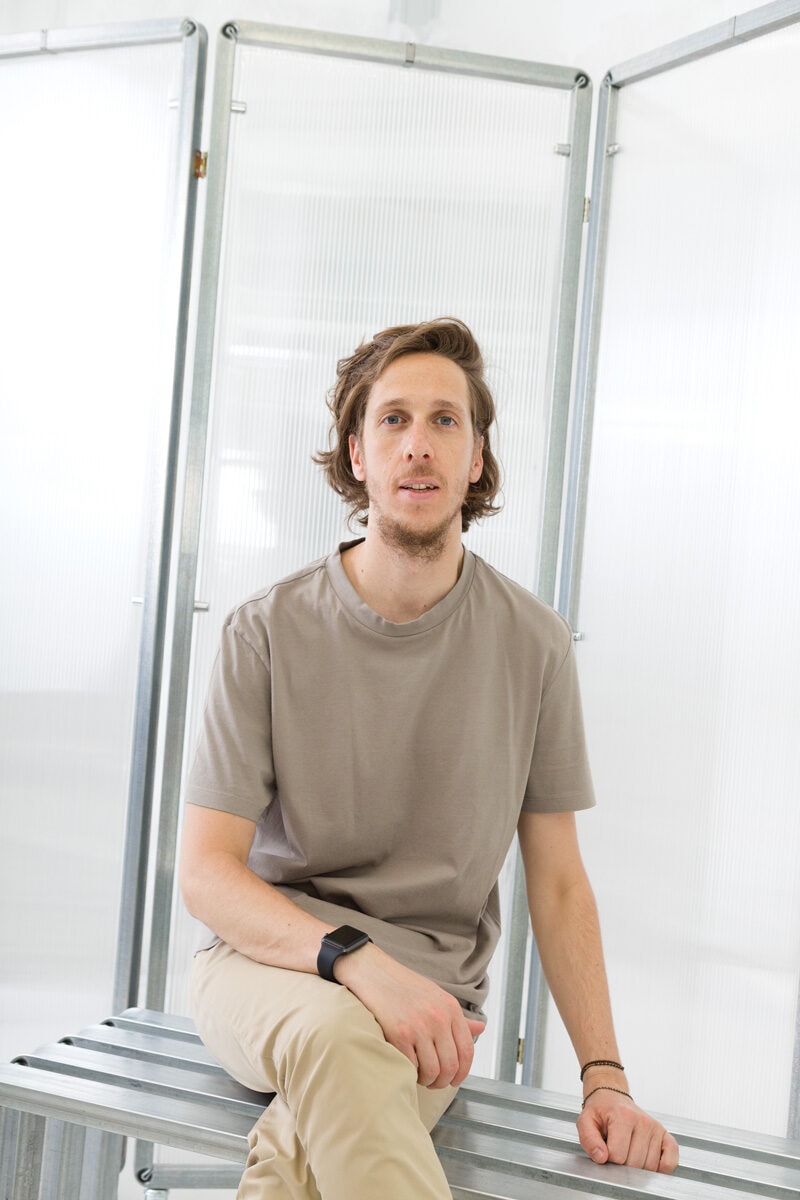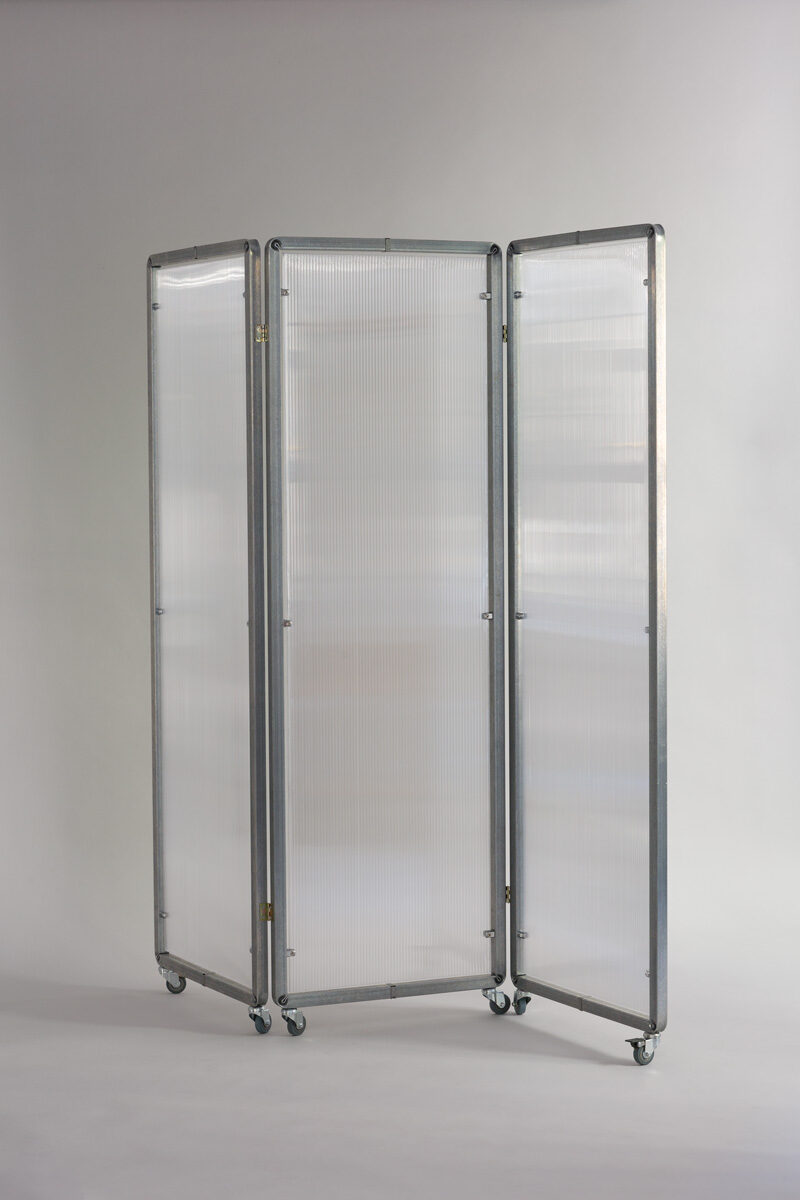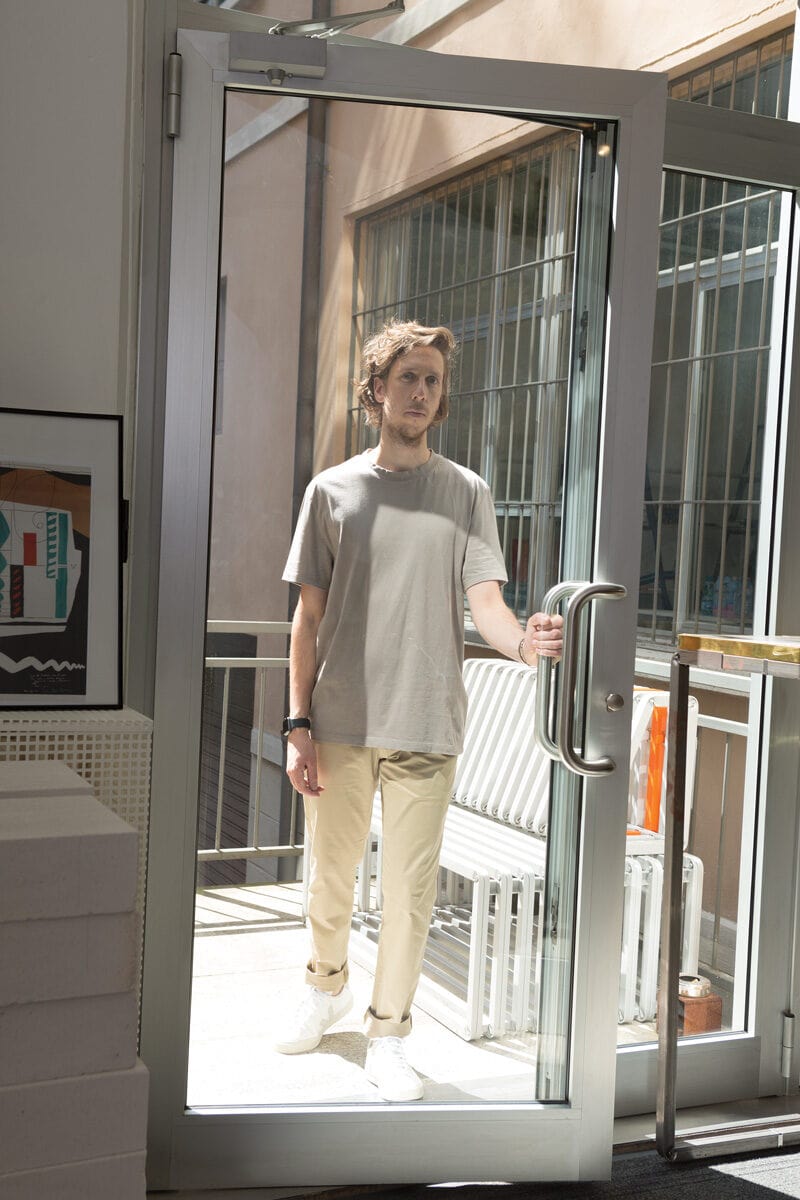Sometimes it’s the simple ideas that change the course of things. And it was the simple idea to bend metal instead of welding it that changed the lives of Federica Paoli and Biagio Castellani, the thirty-year-old founders of situér Milano. The brand, which is less than two years old, already had deep roots in the metalworking world however, inherited from Biagio and the family company that produces industrial shelving in Tuscany. And so it was that after various different experiments, the characteristic “C” curvature that they are known for was born. They first concentrated on shelves and hangers, then came tables, stools, and other furnishing accessories, all with a minimal aesthetic, industrial appeal, and multiple different applications. The story of Austrian cabinetmaker Michael Thonet comes to mind, who bent solid beech with steam in the mid-nineteenth century: the first example of industrial design, the first piece of “mass furniture”, and an essential design icon. It is not surprising that the situér founders count Thonet chairs among their favourite objects. Federica and Biagio are millennials, however, and not only do they understand the logic of industrial production and the design narrative, they naturally use the communication habits of their generation, which considers digital an opportunity rather than a limit. And they know how to “make a virtue out of necessity”.
https://open.spotify.com/episode/3HlvOQXXpOdE50rp165cVe?si=iUALHFOYQNi1EDh6DZ4N-Q
How did situér Milan begin?
Federica: In some ways, it is as though it had always existed. It existed in what we were doing every day at Castellani.it Srl, the company founded by Biagio’s family in 1959. situér came about during our experimentation and, for a while, it just sat there, and nothing happened until we decided to exhibit the first prototypes in different locations around the city during the Salone del Mobile. These pieces with their characteristic curvature immediately attracted the attention of the public, but they still didn’t have a name, a story, any content, or a brand to represent them. All that came later when Biagio and I moved to Milan.
Did you two meet at Castellani?
F: No, we met through mutual friends. When we met, I was in charge of product development for a leather goods company. I had studied architecture in Florence, but I soon realised that wasn’t what the future held for me.
Biagio: Federica joined Castellani because she recognised a valid project. After studying Business and Finance in Milan, I worked in different places around the world before finally returning to Tuscany and to my parents’ company, which has been producing industrial furniture for three generations. Design is both where we met and also our destination, in some ways.
How do your roles in the company balance each other out?
F: As we are partners, people often ask us whether we are a creative couple. The truth is that we are a couple and we work together, but within the company I follow the creative side of things and Biagio the financial side. We do completely different things. Although, inevitably, we always end up talking about work even when we’re at home!
And one day, you spotted something new that probably only your fresh eyes could have noticed. What was the initial reaction at the Salone?
F: Curiosity. People wanted to know how this effect was created. The company has always worked with tubular metal but at a certain point, we realised that we could experiment with solutions other than welding.
B: I think we can say that our characteristic curvature was born both from our production needs and the sustainability of the product itself.
Many companies talk about sustainability nowadays, but it is often a form of “greenwashing”. In your case, however, the product in itself is sustainable.
F: Yes. We work with metal materials which are, by their nature, completely recyclable. And then, the interesting thing is that the folding method allows us to streamline the production process. In addition to making it easier and faster by removing the welding phase which requires a series of finishes, it makes the whole process eco-friendly.
What does steel mean to you?
B: It is our whole world: it is extremely flexible; we know its limits; we can tell its thickness at first glance; and we have calibrated all our machinery to this material. We don’t want to stop with steel though. We have recently begun to experiment with other metals, such as brass. However, it is not always easy to convey to the user that it is not a painted or mirrored metal, but a noble material with a beautiful effect.
The unpretentious, no-frills objects that you produce seem to be a celebration of function over form, or at least the perfect coincidence of form and function. How much of this is necessity and how much is ideology?
F: Let’s say it’s a bit of everything. Since we began as the spin-off of a company that produces industrial shelving, it was unthinkable for us to do anything decorative. But, of course, until now our pieces have been designed by me and can be traced back to my personal taste for minimal objects. So it is partly ideology, partly identity, and partly the production process. It should also be mentioned that this folding technique has a lot of potential but also various limits.
B: Everything is designed around the curvature. But the limits imposed by the production process force us to remain in a space of experimentation which is a good thing. They continually push us to find solutions that aren’t obvious.
That actually brings to mind the claim that you presented your collection with: “Confine”: “Our design begins where established limits end”. What exactly does this mean?
F: Well, almost all the objects we use in day-to-day life are made up of different angles, 90-degree angles, which are perceived as the limit of the object itself. We liked the idea of subverting this and seeing that edge as an integral part of the design rather than an obstacle. Our limit point, the boundary of our objects, is the curvature: a sinuous sculptural shape that is also the essence of our work.
You mentioned your taste for minimal objects before, Federica; what are your aesthetic references?
F: Le Corbusier, ever since I was at school. Biagio and I also share a couple of obsessions, and one of them is for chairs. They are a secret aspiration of ours, we would like to design one one day, perhaps an upholstered chair, but we have not yet found something that we are totally happy with.
Which chairs do you find iconic?
F: Definitely Marcel Breuer’s “Cesca” for Thonet GmbH. And when it comes to upholstered furniture, the “Soriana” by Afra and Tobia Scarpa, which is an absolute benchmark for us.
Where does the name situér come from?
F: It was a long process. Initially we wanted a name that was short and simple yet also identified our industrial background. Instead, the name we eventually settled on refers to the intended use. When you think about it, what do we always do with objects? We position them, we situate them, and each of us does so on the basis of our personal inclinations. We design a product, such as our stool for example, which is a stool but can also be used as a coffee table – in short, it can take on multiple functions. It’s nice to see how each person interprets our pieces and how they create an environment around them.
B: Our goal is simply to make them as versatile as possible.
How do these objects fit into the domestic space?
F: It is interesting that on first sight, people tend to relate to us as an industrial object. But then, once they come to the showroom and see how many customisation options there are, with different finishes or colours, they realise that they can make the product their own and that changes their perception. It is no longer an industrial object, it takes on the connotation of furniture.
Among other things, you define situér Milan as “a creative meeting point”. What do you like about collaboration?
B: They allow us to push our experimentation even more, to really understand something, to take advantage of the experience of our collaborators to broaden our horizons. This year, if the Salone del Mobile had been held as scheduled, we would have presented a collection with architect Lorenzo Guzzini. Lorenzo grasps the strong identity and innovative content of our product and tried to create a collection that brings out the best in the curvature without losing its signature style.
F: The hardest part but also the beauty of working together, is being able to bring together those different identities in a single object. Our work with Guzzini is supposed to be the beginning of a series of collaborations with other architects and designers who want to challenge themselves with the limitations of our curvature.
Design today is a highly structured world with plenty of big players, how does it feel to be young entrepreneurs in that environment?
B: Being young entrepreneurs today means being brave, no doubt about it. It means putting yourself out there because you believe in your project and what you have to say. And, more than anything else, it means working hard. It also means being aware of the past and feeling a responsibility towards tradition, treasuring it while still trying to innovate, from a completely new perspective, to lead the company towards the future.
Your production HQ is still in Tuscany, but you have moved to Milan and also included it in your brand name. Milan was home to the golden years of design, does it represent opportunity or inspiration to you?
F: I think more than inspiration, Milan is contamination for us. We chose our showroom, near Bar Basso, because the space suited our needs and we only later realised that we were surrounded by other design studios and fashion headquarters. Without knowing it, we found ourselves in a lively and creative area and many collaborations have developed spontaneously right here, among our neighbours.
Despite this period of smart working and Zoom meetings, does proximity still make the difference?
B: Absolutely. Milan is a city of neighbourhoods: everything revolves around the neighbourhood, even with regards to work, and it’s nice to discover that your neighbours still matter.
Has the pandemic and everything that came with it changed the way your work?
B: In general, I think it has accelerated many processes. From the very beginning, we had focused on a mainly online communication strategy, making sure our e-commerce and social media channels were always active. In full lockdown, it was vital to know that we could rely on digital both to carry out our work and to maintain interaction and dialogue with customers and other professionals in the sector.
F: Unlike fashion, the world of furniture and design still struggles online, but we think that what happened has given us an opportunity to work out how to evolve. Digital is indispensable and very powerful in terms of communication since you can reach a huge audience; but we believe it is most effective when combined with offline strategies, because in the end, design is composed of details, materials, workmanship, tradition, and people. And it still needs to be seen, touched, and experienced.
Do you believe that design in Italy is experiencing a moment of (new) renaissance?
F: Without a doubt. The world we are living in and the events that have taken place have led us to reflect on the role of design and objects in our life, as well on the importance of the space we live in. And, as history teaches us, the meaning of “renaissance” is precisely that: a moment of rupture aimed at the renewal of an exhausted civilisation. That is why a moment of rebirth is necessary, so that we can go back to focusing on our needs and priorities, in order to surround ourselves with the things that make us feel good, with beautiful but functional, quality objects that are produced in an ethical and sustainable way and that keep alive the Italian artisan tradition, which is our real strength.
Credits:
Words by Marta Galli
Photography by Mattia Greghi
Starring Situèr Milano

